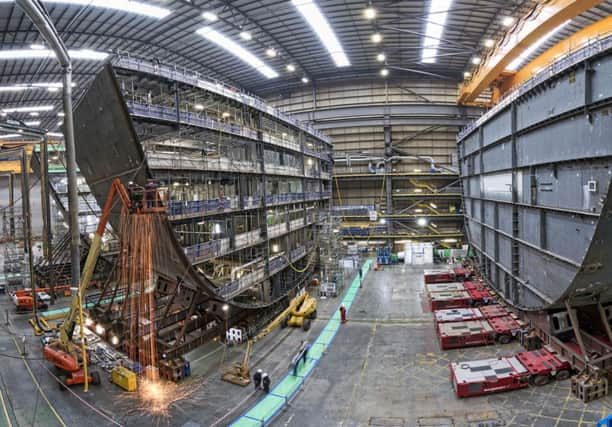Timeline of Portsmouth shipbuilding saga


1194: King Richard I gives Portsmouth its first Royal Charter, creating Portsmouth’s dockyard.
1495: King Henry VII orders the construction of a dry dock at the yard - believed to be oldest in existence.
1497: The first known ships are launched.
Advertisement
Hide AdAdvertisement
Hide Ad1509 to 1511: Work is carried out on Henry VIII’s flagship the Mary Rose.
1511: The yard is officially appointed as the place where the king’s ships would be built.
1670: Charles II creates the Royal Navy and grants Portsmouth’s yard royal status.
1732: The Royal Navy Academy is created, a facility dedicated to educating naval officers.
Advertisement
Hide AdAdvertisement
Hide Ad1890s and early 1900s: Large docks at the port are built and the big-gun ship HMS Dreadnought was launched in 1905 by King Edward VII.
1914: A total of 1,658 ships are docked for refit or repair during the First World War, and employee numbers at the yard increase to 23,000.
1939-45: During the early part of the Second World War, the yard suffers massive bomb damage and is considered too risky to dock strategic ships.
1963: The number of people employed at Portsmouth’s shipyard falls to 12,000 as it becomes one of only four remaining naval shipyards, alongside Devonport, Chatham and Rosyth.
Advertisement
Hide AdAdvertisement
Hide Ad1981: Portsmouth dockyard is saved from closure and it is decided the city is to host a new maintenance organisation.
1988: The government, led by Margaret Thatcher, begins to denationalise shipyards around the UK.
1998: Labour commits to replacing three Invincible-class aircraft carriers.
2007: Contract announced for two state-of-theart Queen Elizabeth-class aircraft carriers.
Advertisement
Hide AdAdvertisement
Hide Ad2009: BAE Systems gains full control of Britain’s shipyards in Portsmouth and the Clyde.
2011: Shipbuilders play a key role in constructing two new aircraft carriers by helping to build a 6,000-ton section of the mid-ship for the first one, HMS Queen Elizabeth.
November 2013: BAE Systems says it will move its shipbuilding division to the Clyde, in Scotland.
January 2014: PM writes to The News about shipbuilding and creates Minister for Portsmouth role to try and secure future of city’s maritime sector
Advertisement
Hide AdAdvertisement
Hide AdJanuary 2015: George Osborne visits city and reveals three firms in the running to take over shiphall.
February 2015: David Cameron visits Portsmouth. He reveals Magma as new shipbuilders.
July 2015: Questions raised about Magma’s deal.
November 2015: Magma insists deal is ‘on track’.
March 2016: The MoD has finally caved in and admitted the deal has collapsed altogether.
Instead, it said it would transform the empty facility into ‘a centre of engineering excellence’ to fix minehunter-class ships - work which already happens in the naval base.
July 2016: Portsmouth minister role axed under government cabinet re-shuffle